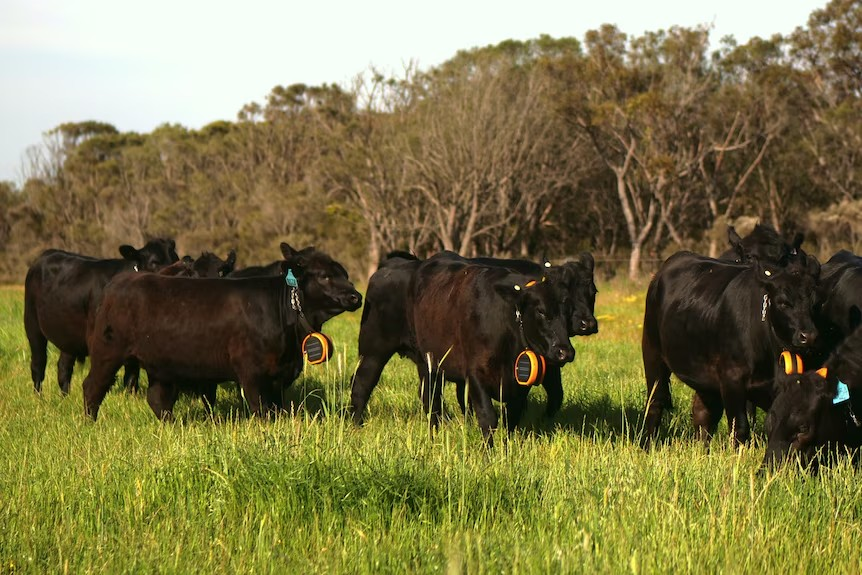Virtual fencing technology is becoming increasingly popular in Western Australia, allowing farmers to manage livestock without physical fences.
So how does it work?
To create the virtual fences, cattle wear a solar-powered, GPS-enabled collar that allows livestock to be tracked and moved around the farm from software on a smartphone or tablet.
The collar, which each cost $350, beeps as the animal approaches an invisible fence.
If the animal continues to walk further past the boundary line the collar will discharge a minor, non-harmful electric shock signal.

It takes 7 to 10 days for the cattle to learn what the signals mean when the collars are initially fitted, eventually recognising the beep and stop pushing past the boundary — avoiding getting a zap altogether.
The use of virtual fencing is governed by the Animal Welfare Act 2022 which prohibits the use of virtual fencing devices unless they have been assessed and approved for use by an amendment to the General Regulations.
Virtual fencing is also commercially available in Queensland, NT, and Tasmania, with a wider range of brands on the market.
Comments